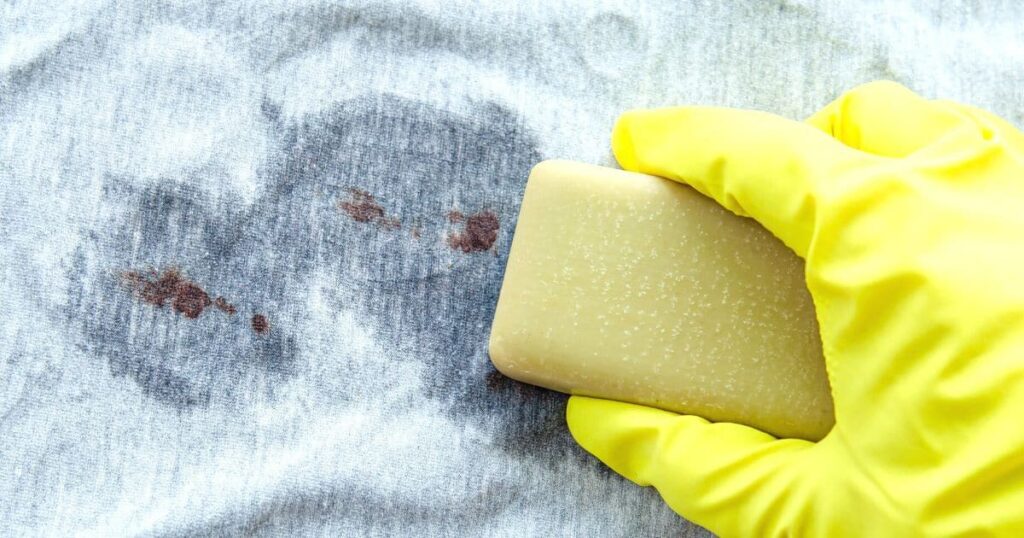If you’re concerned about your health and the environment, it’s important to know how to remove lead from clothing safely. Lead is a toxic metal that can be found in various everyday items, including clothing. Exposure to lead can have serious health consequences, especially for children and pregnant women.
Fortunately, there are steps you can take in order to keep yourself safe while still enjoying stylish outfits.
And Yes, it is possible to remove lead from your clothing. You may wash leads out of your clothing by hand or in a washing machine. There are, however, a few important considerations.
In this blog post, we’ll bring attention to how removing lead from clothing safely and properly is key to maintaining a healthy and fashionable wardrobe.
Why is it important to remove lead from clothing?
Lead contamination is an unfortunate reality in our present world. It’s hidden in the clothing we wear, unavoidably absorbed into our bodies. Despite the unsettling health risks that come with such accidental exposure to lead, there are steps one can take to keep their wardrobe safe from potentially dangerous elements.
Lead can be found in many different materials, including fabric. This means that even if you don’t work with lead directly, you may still come into contact with it through your clothing. When worn for extended periods of time, lead-containing clothing can release small amounts of lead that can be absorbed through the skin or inhaled. This can result in lead poisoning, which has been linked to neurological and developmental issues, as well as various other health problems.
All You Know About Lead
Until 1978, lead was commonly used as a pigment in paints, therefore everything painted before then may contain lead. Lead is also included in many commonplace things, including gasoline, plastic, crayons, glass, ink, chalk, and many more.
People are more likely to be exposed to lead in clothing through the use of vintage or previously owned items.
Unfortunately, lead has an unusually appealing flavor; this makes babies and young children want to latch on to them, despite the fact that doing so can result in severe health problems, including brain damage, seizures, and even death.
Do you know that lead dust settles on clothing quite frequently, so if you have any reason to believe that an item you own contains lead, you should not wear it or wash it in your home washing machine.
The strangely pleasant flavor of lead makes it appealing to infants and young children; however, ingestion of even little amounts of lead can result in serious health problems, including brain damage, convulsions, and even death.
Detecting Lead From Your Clothes:
Here are some ways to detect lead before washing your clothes.
- Look for spots of darkening, especially dark or rusty ones, and check older clothes for paint that is chipped or peeling, as these could be signs of lead.
- For a quick and easy approach to checking for lead on clothing, try using Lead Check swabs, which turn a different color when exposed to the metal.
- Consult a professional for lead testing to ensure precise findings due to the use of specialist equipment and knowledge.
- Use of non-destructive X-ray fluorescence (XRF) testing by trained professionals allows for precise detection of lead and other elements in garments.
A Thorough Method for Eliminating Lead from Clothing:
Once it has been determined that your garments have been stained with lead, a thorough washing is required. Lead-contaminated clothing requires special attention and care when being laundered.
1) Identify Clothing Contaminated with Lead
Find any clothing that might have been exposed to lead first. Keep an eye out for any unexpected discoloration or stains that could indicate lead exposure.
In order to properly handle lead contamination in your clothing, proper identification is essential.
Pro Tips: Use gloves while dealing with dirty garments to prevent contamination.
2) Gently Shake and Brush Off Loose Particles
The best way to get rid of the lead dust is to take the dirty items outside and give them a good shake. Remove dust and dirt from the fabric with a brush.
Lead particles could easily spread, thus care must be taken during this process. Shake and sweep off the loose particles of lead before touching the fabric with your hands.
3) The Wet Cleaning Approach
A damp cloth or sponge can be used for the wet cleaning procedure, in which the stained sections of clothes are wiped down.
Prepare some water and a light detergent in a basin. Carefully scrub the affected areas without spreading the lead. Just give it a good rinse and hang it up to dry.
Pro Tip: Warm water can permanently set lead stains, so it’s best to avoid it if you can.
4) The White Vinegar Method
Have you ever found yourself in the unfortunate position of having your favorite shirt ruined by lead stains caused by spilling battery acid on it? Don’t worry; white vinegar, a basic kitchen staple, may easily get rid of lead stains on clothing.
In order to remove unsightly lead stains from cloth, white vinegar can be used as an efficient cleaning solution due to its acidic qualities.
- Simply soak the area for a few hours or overnight in a solution of water and vinegar, then wash as usual.
- If you have a very stubborn stain, consider spraying it with undiluted vinegar and letting it sit for a few minutes before washing.
This method not only saves money, but it’s also safe and better for the environment than using store-bought cleaners. With the white vinegar method, you may get rid of lead stains and keep your beloved garments at the same time.
5) Making Use Of Bleach
Getting rid of stains on clothing is a must, but what about the potential dangers hidden within the fabric?
A simple wash cycle might not be sufficient to remove all lead contamination. Good thing there’s a way to get some relief from this!
Researchers have found that bleach may successfully remove lead from clothing, making it a viable option for a thorough yet safe wash. To eliminate both stains and toxic substances from your clothing, use a small bit of bleach in each load of laundry. It’s a baby step toward a more secure and comfortable home life.
6) Seek the Advice of a Trained Cleaner
If the amount of lead contamination is high or the item of clothing is very fragile, you may want to take it to a dry cleaner who specializes in dealing with such situations.
Expert cleaning is the only way to guarantee that all traces of lead have been removed without damaging the fabric.
Do’s And Don’ts
If you follow these guidelines, you will reduce your risk of exposure and increase the likelihood that your lead-stained garments will come out of the wash clean. Take all necessary safety measures if working with anything that could be tainted with lead.
- When dealing with lead-contaminated clothing, it is recommended that you use protective gear such as gloves and a mask.
- Keep lead-contaminated clothing isolated from the rest of your laundry loads.
- Please wash your clothes in cool water. Lead stains are more difficult to remove from cloth if they are established by hot water.
- Choose detergents with low pH and low sulfate levels to reduce the risk of damaging your clothes in the wash.
- Before hanging clothes to dry, double-check all traces of lead have been removed.
- Dry the clothes by hanging them up in a well-ventilated location to avoid further contact with any lingering lead and to reduce the risk of shrinkage.
Have a Look at Don’ts:
- If you want to avoid further dispersal of lead particles or fabric damage, avoid using abrasive cleaning methods or vigorous scrubbing.
- Clothes that may have been contaminated with lead should not be washed with other articles of clothing.
- Do not try to make your own solutions for getting rid of lead because they can be dangerous and hurt the cloth.
- Do not shake lead-contaminated clothing, since this can release lead particles into the air, which can then be inhaled.
- Don’t dry the fabric at a high temperature because doing so could permanently set any lingering lead stains and cause irreparable damage.
Afterward
So, wrapping it out and preventing clothing from becoming contaminated with lead is the best method for eliminating lead exposure. If you do end up with lead-stained garments, it’s essential to handle them safely and properly to avoid further exposure risks.
By following these thorough methods and safety precautions, you can effectively remove lead stains from your clothes and reduce potential health hazards. Remember to always seek professional help if needed and never hesitate to take extra safety precautions when dealing with lead contamination. Stay safe and keep your clothes clean!
Keep an eye out for any unexpected discoloration or stains that could indicate lead exposure and handle contaminated clothing with care. With these tips, you can effectively remove lead from your clothes and keep yourself safe from potential health risks associated with lead exposure.




